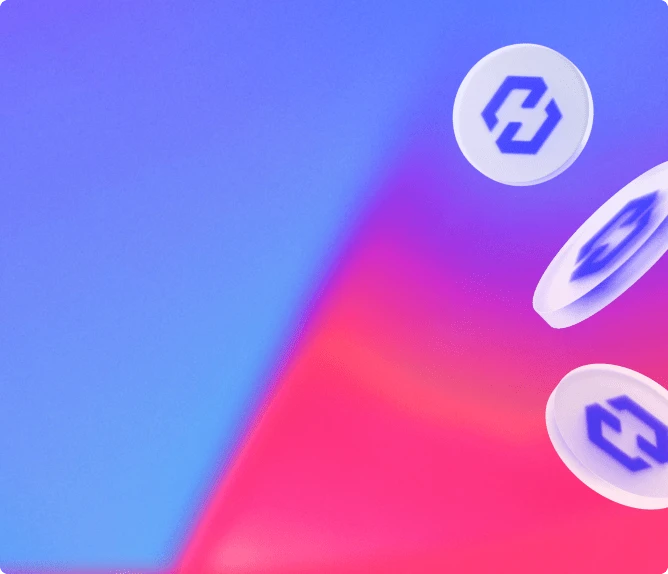Investing in crypto-assets carries risks of liquidity, volatility, and partial or total capital loss. Crypto-assets held are not covered by deposit and securities guarantee mechanisms.


Sign up for our newsletter
Partners
Coinhouse
Our accounts
Coinhouse
Coinhouse SAS with a capital of €210,000, RCS Paris 815 254 545, headquarters: 14 Avenue de l'Opéra 75001 Paris – support@coinhouse.com. Registered with the AMF for activities related to the purchase/sale of digital assets against legal tender, the exchange of digital assets for other digital assets, and the custody of digital assets for third parties under the registration number: E2020-001.
Coinhouse payment solutions
Company registered with the Paris RCS under the number 914 384 557, registered with the Prudential Control and Resolution Authority as a payment service agent under the number 727503 of the electronic money institution Treezor, headquartered at 33 Avenue de Wagram, 75017 Paris.
General conditions, disclaimers and legal documents.



Open an account
Bitcoin is the creation of a person or group of people hiding behind the pseudonym “Satoshi Nakamoto”. He (or she) has been able to merge different technologies combining cryptography and distributed registers in order to offer a valuable network without trusted third parties. Despite the success of his invention, Satoshi’s identity remains unknown, and he quit the project in 2011. But if Satoshi came back tomorrow, would he be able to control Bitcoin? Is the protocol really secure?
Speculation about Satoshi Nakamoto’s true identity has been recurrent since Bitcoin’s early years. Satoshi Nakamoto’s reasons for remaining anonymous are unknown, although its is likely he wished to avoid significant media harassment and potential legal proceedings, as Bitcoin has been banned in several countries. Satoshi Nakamoto left the project in 2011, leaving Bitcoin in the hands of its users and thus fulfilling the vision of a decentralised and censorship resistant network of value: the emergence of a truly different currency.
Bitcoin is an open source software with all the code available on the dedicated github page. The study of the software’s code allows us to know precisely how it behaves. This makes it easy to verify that Satoshi could under no circumstances manipulate the Bitcoin protocol and make it evolve at its own discretion or change the content of a particular portfolio. Based on promising and disruptive technology, we believe that Bitcoin has many advantages and that’s why you can buy bitcoins on our online platform.
There are many answers to this question. They are very well detailed here by engineer Jameson Lopp.
In Bitcoin, everything is designed and configured to avoid centralisation and single points of failure. You can read our article on the 21 million bitcoins limit, which is an important feature of the protocol.
While everyone can contribute to the code on Github/bitcoin, a number of safeguards are implemented to ensure that the code and its evolutions remain secure.
A limited number of individuals, the core developers, have the ability to publish and sign a new version of the protocol using what is called their PGP key: the equivalent of a Bitcoin private portfolio key. Today, five people hold verified keys. This number is dynamic and these people are known to have been actively involved in the development of the protocol for many years. They may choose to add/remove a member at any time by consensus.
Any other developer has the ability to propose changes to the protocol, and core developers are responsible for reading them and accepting or rejecting them.
First of all, there are several implementations of the Bitcoin software. While Bitcoin Core is the main implementation on which most developers work with more than 95% of nodes, there is no requirement to use it. The application being compatible with the protocol is enough, and it will be usable throughout the network, in the same way that web users have the choice between Chrome, Firefox or Edge.
But even if you use a different software, it must comply with the protocol. However, the protocol is also controlled by core developers. Can we then still talk about decentralisation, since it would be enough for some of them to agree to modify it in the way they would like?
Fortunately not: the only power core developers have is to publish and propose new versions of the protocol to the community. Ultimately, the owners of the network nodes are responsible for deciding whether or not to update their machines with a new version. It can therefore be said that the decision to change the protocol is taken by consensus by the owners of the nodes of the Blockchain.
Nothing prevents a new development team from emerging and proposing a new version. If it is accepted by the vast majority of nodes, it becomes the official version.
This freedom was used in 2017 for the implementation of SegWit. The miners were reluctant to adopt SegWit. A proposal was then made under the name BIP148 to also involve node owners and give their opinions. As this proposal was not applied to Bitcoin Core, an implementation called Bitcoin UASF quickly gained popularity. The pressure put by Bitcoin UASF was enough for the miners to integrate SegWit via the processes defined in Bitcoin Core.
In a nutshell, the technology and protocol that make Bitcoin work allows it to evolve dynamically, on the principle of consensus and not unilateral decision. The answer to the question “Who controls Bitcoin?” is simple: “nobody and everyone at the same time”, through a mechanism not based on democracy, but on consensus. Welcome to the world of free software.
Share the article

